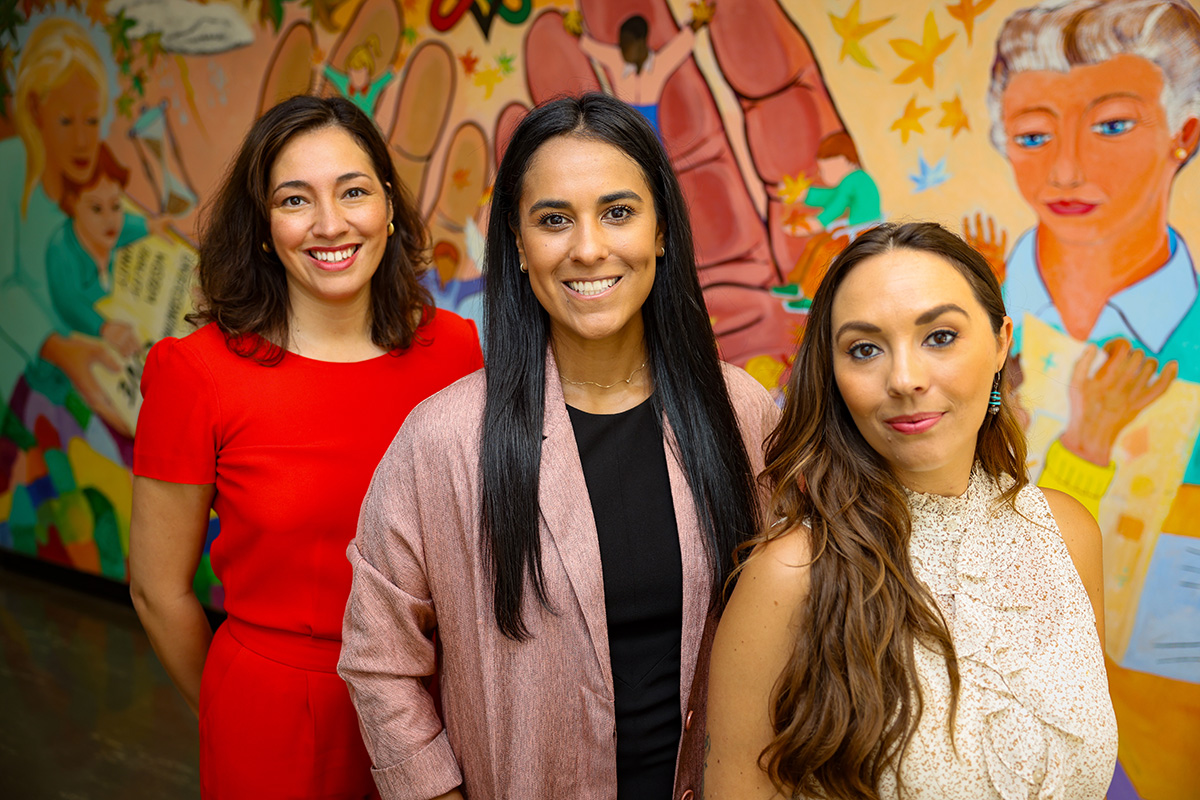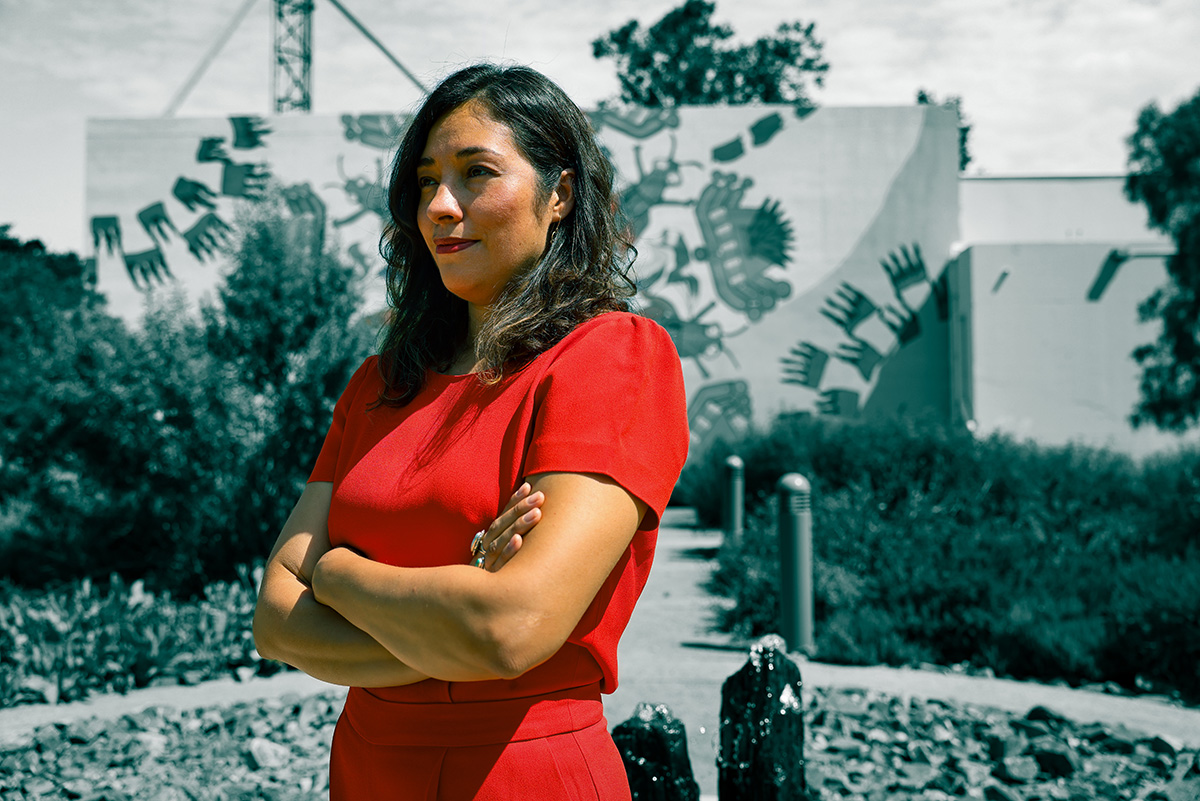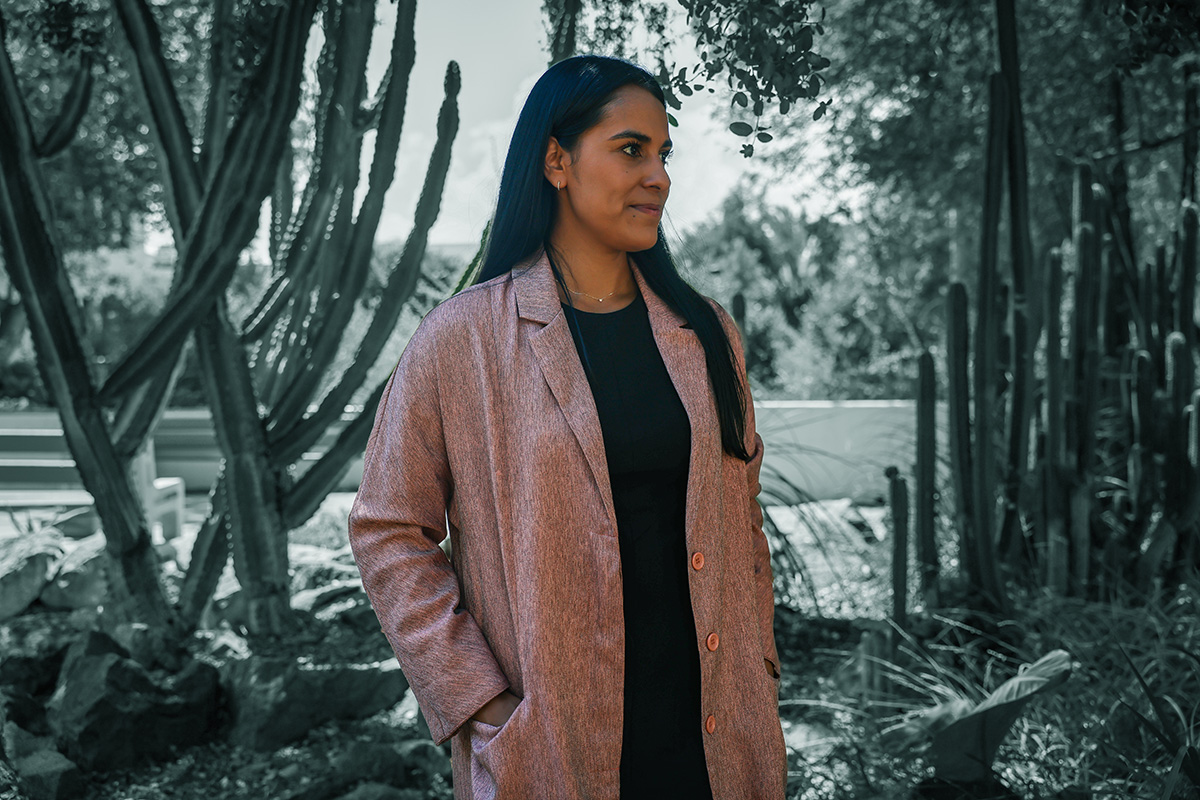Equity and Empowerment for Emotional Well-Being
Working out of K–12 school sites, community settings and living rooms — spaces that would never be mistaken for the ivory tower — three SDSU College of Education researchers are striving to improve mental and emotional well-being for children and youth in diverse communities across California.
And each does so in settings that often mirror their own experiences growing up in the Golden State.
By Michael Klitzing

Flipping the narrative
Decades of research have focused on childhood trauma as a predictor of poor mental health outcomes. But as Jennica Paz studies youth well-being, the associate professor in SDSU’s Department of Counseling and School Psychology is out to find something different.
“I’m interested in discovering the internal and external resources in one’s environment that enable young people to thrive despite the fact that they’re experiencing adversity,” she said.
Paz, a licensed clinical and school psychologist, experienced her own adversity while growing up in the foster care system in San Diego. But that experience did not define her: It gave her a sense of purpose.
“Ever since high school I’ve viewed helping others as the golden ticket to break cycles,” Paz said. “To be able to live a life determined by yourself and not by your generational patterns.”
Her work centers on the concept of “positive youth development” (covitality) — focusing on the factors in schools, home environments and communities that help young people thrive. Paz conducts her research through mutually beneficial community partnerships. She is frequently contacted by San Diego–area schools asking her to assess student mental health through wellness screeners.
“A lot of my research begins at the screening level,” said Paz, who works with students primarily in grades 3–12. “We’re asking the youth themselves to identify different assets and positive psychological constructs that are going well in their lives.”
Collecting and analyzing survey data and other metrics, she works with partners to build systems of support, which could be at the schoolwide, group or individual levels depending on needs. Interventions include topics such as fostering a growth mindset, which have been proven to build self-efficacy.
The efforts are certainly timely. Paz points to a youth mental health crisis, exacerbated by factors such as pandemic isolation and online bullying. School-initiated referral rates to residential treatment centers, she said, have skyrocketed.
“This is particularly impacting diverse communities and students of color,” Paz said. “And with students who are LGBTQ-identified and those who are in foster care, those rates have spiked even more. I think the intersection of these needs deserve so much more attention and a comprehensive approach.”


Breaking cycles of disparity
In the U.S., there are many research- tested interventions available for families of autistic children. But for Latine families in the U.S.-Mexico borderlands, where families often live fluid lives between two countries, there is a dual barrier to care. The services are both hard to access and a poor cultural and linguistic fit.
Ana Dueñas, an assistant professor of special education, has seen these barriers play out not only as a researcher but also as a former social worker for families of autistic children in San Ysidro, a border community.
“There is a cycle of service dis- parity,” she said. “It starts from early diagnosis and timely diagnosis to the lack of services that are culturally and linguistically appropriate for families.”
Dueñas, who proudly identifies as transfronteriza (transborder), having grown up between Tijuana and San Diego, is out to break the
cycle. She recently became the first ever SDSU recipient of the Institute
of Education Sciences Early Career Award, which supports the research and career development
of promising researchers.
The award will support her work in the Imperial Valley, a rural community where disparities are particularly acute. She will assess community needs and adapt proven therapeutic autism interventions — typically designed for white, middle-class families — to better fit transborder culture and context.
Going beyond mere translation from English to Spanish, Dueñas will focus on ways to best provide education and coaching to families about what autism is and means, and how to leverage the strengths of multi-generational households.
Using a community-engaged model, Dueñas plans to partner with Imperial Valley community organizations and allow families to select which existing caregiver-mediated strategy she should adapt.
“To me, success means fully integrating into the community,” she said, “or at least having the community see me as a resource.”
Well-being through empowerment
As she works to improve the schooling experiences for K–12 students, Vanessa Placeres often thinks of her own childhood. Born into a large, tight-knit Mexican-American family in the small Northern California town of Tracy, she never saw herself as someone who could move away from her loved ones, let alone hold a Ph.D. and make an impact as a researcher.
“I want kiddos to be able to see themselves in spaces that are bigger than what they might otherwise believe possible,” said Placeres, assistant professor of school counseling.
Placeres is working through the California State University Center to Close the Opportunity Gap to study the implementation of new programs to serve marginalized student populations in Southern California school districts — hoping to glean lessons that might apply more broadly to future initiatives in other locales.

Within Los Angeles Unified School District, Placeres is interviewing principals, teachers and families about the Black Student Achievement Opportunities Program, which aims to strengthen the academic performance, social-emotional well-being and positive cultural identity of Black students.
Further down Interstate 5, she’s examining Santa Ana Unified School District’s implementation of Xinachtli, a gender-responsive support group for Latine middle school and high school cis and trans girls and non-binary youth. The program’s scope is notable, as Placeres called a lack of inclusion and visibility for gender-diverse students in district programming one of the biggest obstacles she has encountered during her research.
Placeres is excited to interview students in person this fall, calling the opportunity to be invited into their space “a gift.”
“Growing up, even well into my academic career, I saw the implications of not having folks who looked like me or who could even understand a lived experience like mine,” she said.
“It’s tremendously important to get this right — not only for their academics but for their mental health and their ability to see themselves as something larger than they’ve been given the opportunity to dream.”